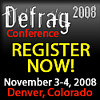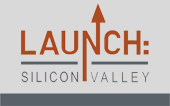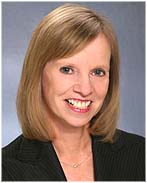 I’ve never particularly liked Uncov, the anti-web 2.0, anti-startup, anti-everything rug. Not that it was always wrong: it’s criticism was often well-deserved, just a bit too vitriolic for my taste. But vulgarity is popular, and titles like I’m Going To Scale My Foot Up Your Ass certainly grabbed attention.
I’ve never particularly liked Uncov, the anti-web 2.0, anti-startup, anti-everything rug. Not that it was always wrong: it’s criticism was often well-deserved, just a bit too vitriolic for my taste. But vulgarity is popular, and titles like I’m Going To Scale My Foot Up Your Ass certainly grabbed attention.
Of course it’s always easier to criticise than actually build, and for Uncov editor Ted Dziuba the opportunity to put his money where his mouth was came when he finally launched his own startup, Persai – soon renamed Pressflip. To focus on the startup, Ted and his fellow authors shut down Uncov.
Will Pressflip make it? Too early to say, but TechCrunch wasn’t too positive about it a few months ago. (they can always rebrand it again, this time to Pressflop).
A few days ago Uncov came back to life, but with a twist: it opened up to guest bloggers. And here’s Dziuba’s Ars Poetica, which perfectly sums up why I still dislike Uncov:
If you want to blog at uncov.com, it should be in the style of Uncov. It doesn’t have to be technical or nerdy, and you should feel free to take shots at people, so long as you do it in the Uncov fuck-you-and-everyone-that-looks-like-you fashion.
The latest twist in the story: Ted Dziuba has just quit Pressflip.
I’m leaving for personal reasons: mostly because I’m going to be a father in March and need some stability, but also because I’m tired of the fight.
The announcement is on Ted’s personal blog, not Uncov. It probably does not meet Uncov standards. For the first time Ted Dziuba sounds perfectly normal. Family man. Human.

![Reblog this post [with Zemanta]](https://www.zoliblog.com/wp-content/uploads/HLIC/54e6a3db43b098ecbf5db09e027cb1c1.png)

 )
)


 Fincancial crisis or not, VC investments did not entirely disappear, it’s just getting increasingly difficult to get funded. But VCs are still on the lookout, and as proof I’ll be moderating another
Fincancial crisis or not, VC investments did not entirely disappear, it’s just getting increasingly difficult to get funded. But VCs are still on the lookout, and as proof I’ll be moderating another  I don’t claim to be an expert economist, so
I don’t claim to be an expert economist, so ![Reblog this post [with Zemanta]](https://www.zoliblog.com/wp-content/uploads/HLIC/1e888c58c2f8097a76d183db620f05dd.png)
 In living proof that there is life outside the Palo Alto / Menlo Park proximity, SVASE will host a VC Panel on investing in Green Tech tomorrow at the Crow Canyon Country Club, in Danville, CA. (A very green venue for a Green Event
In living proof that there is life outside the Palo Alto / Menlo Park proximity, SVASE will host a VC Panel on investing in Green Tech tomorrow at the Crow Canyon Country Club, in Danville, CA. (A very green venue for a Green Event I’ve pretty much said everything there is to say about
I’ve pretty much said everything there is to say about 
 This year’s
This year’s  .
. After a long break I’ll be moderating another
After a long break I’ll be moderating another 
Recent Comments